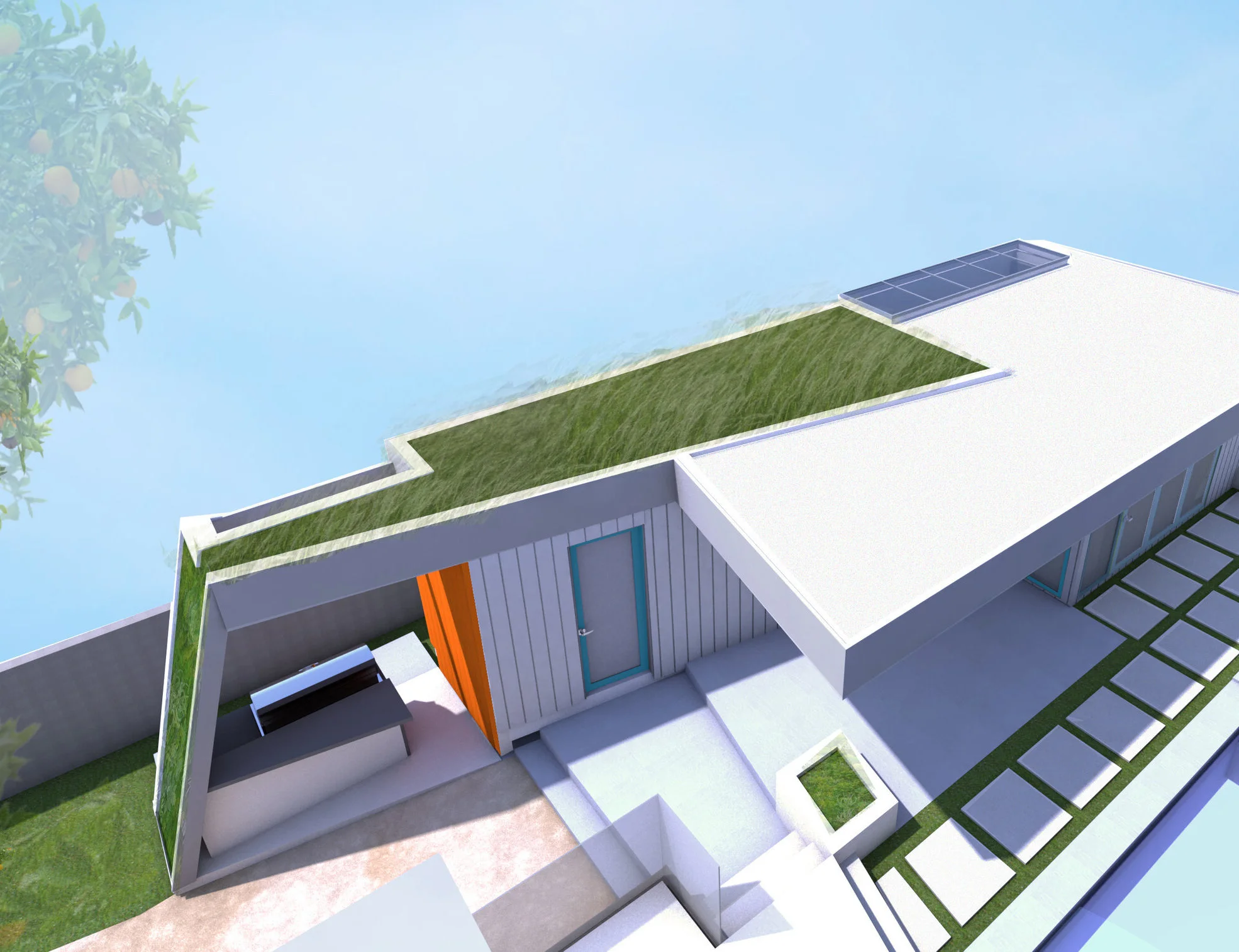TRANSFORMING YOUR LAWN
About half of California’s water is used for outdoor irrigation. Transforming your lawn into a landscape of native plants that are drought resistant reduces waste, adds beauty, and increases property value.
FIXTURES
Installing faucets with aerators saves 1.2 gallons of water per person per day, and utilizing high efficiency toilets can save 19 gallons per person per day.
TREATING STORMWATER ON SITE
The City of Los Angeles Low Impact Development or LID program seeks to reduce the impact of urban runoff. LID comprises a set of site design approaches and best management practices that promote the use of natural systems for infiltration, evapotranspiration, and use of stormwater. These LID practices can effectively remove nutrients, bacteria, and metals from stormwater while reducing the volume and intensity of stormwater flows.
NET POSITIVE WATER-HARVESTING AND REUSING
Harvested rainwater can provide a source of alternative water to the home. Alternative waters are sustainable sources of water, not supplied from fresh surface water or groundwater, that offset the demand for freshwater. Rainwater harvesting captures, diverts, and stores rainwater from rooftops for later use. Typical uses of rainwater include landscape irrigation, wash applications, ornamental pond and fountain filling, and toilet flushing. With additional filtration and disinfection, harvested rainwater can also be treated to potable standards.
MOVING AWAY FROM NATURAL GAS
Many cities across California have banned new natural gas hookups in homes, and while Los Angeles hasn’t made a ban explicit yet, it has set a goal of carbon neutrality by 2030. Though natural gas was billed as a bridge fuel to clean energy, its carbon emissions are significant and reducing dependence on it is key to a sustainable future.
INSULATION
Insulation is among the best investments a homeowner can make in upgrading efficiency and reducing energy use. When considering new insulation, energy savings is of course the primary driver. However, it is also important to consider the manufacturing process, materials, and potential toxicity. Materials like wool and cotton are sustainable, safe to handle and don’t cause respiratory irritation.
OPERABLE WINDOWS
Windows that can open provide natural cooling during summer months, particularly in California coastal zones. Additionally, combining operable windows with a zoned, automated HVAC system that senses what areas to cool based on where windows are open could significantly reduce energy usage.







Are Smart Homes a Wise Decision?
One does not need to geek out on technology to know that smart homes will not only continue into the future but will become even more advanced. That’s right, even smarter. In fact more smart cities will be popping up in addition to smart home automation. And what exactly is a smart home?